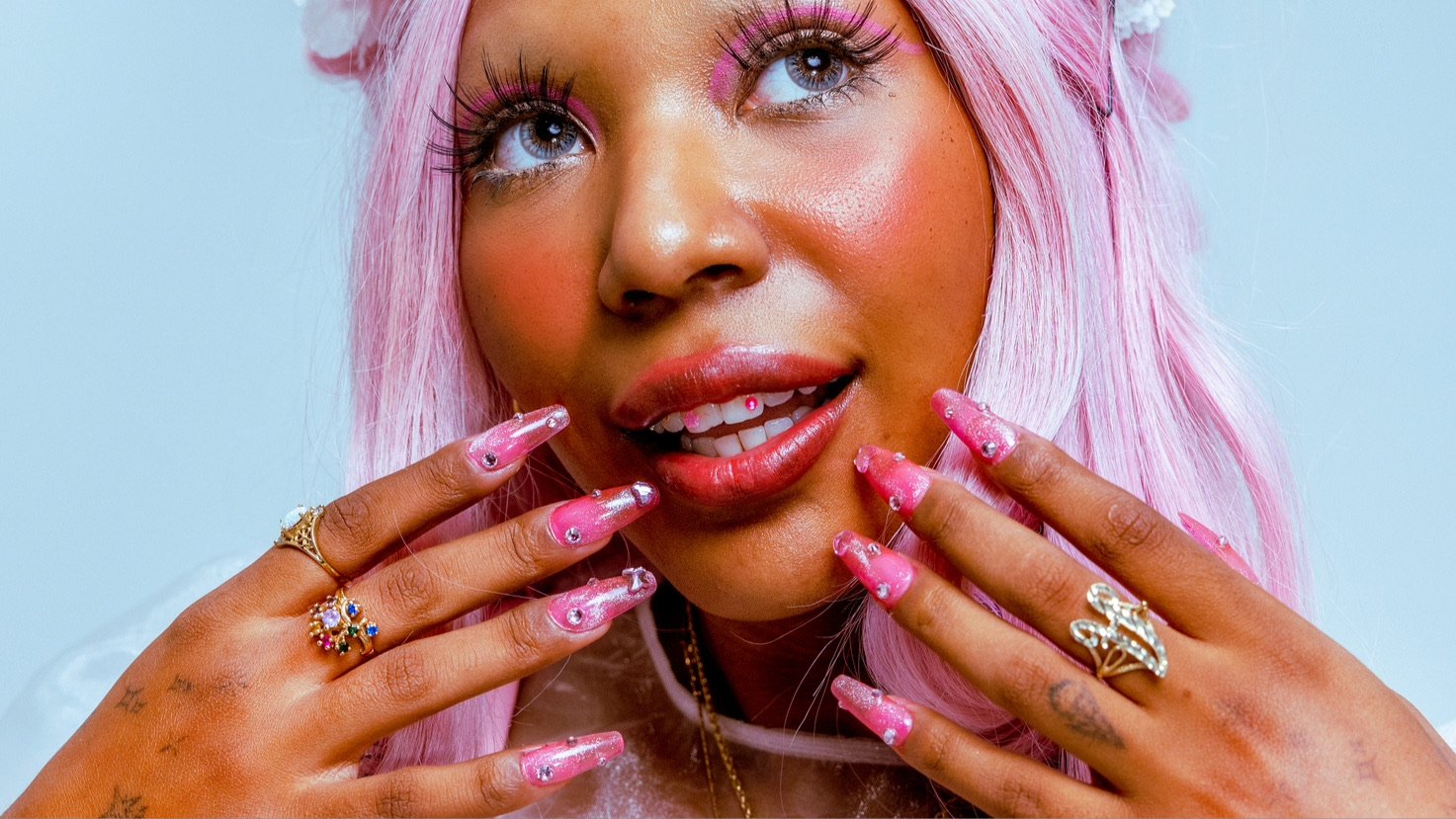Nail Salon • Perspective
How Black Women Pioneered Nail Art

By Jozlyn Miller . Feb.22.2021
Share Article
The exciting styles of today’s acrylic nails have their roots in Black culture.
Nail styling is a thriving industry, as a quick glance at the hands in the room will likely tell you. Nearly endless options for self-expression are literally at your fingertips, with different shapes, colors, textures, and accessories available for both natural and artificial nails. Nail art is everywhere: magazine covers, music videos, and on the red carpet. But nail styling wouldn’t be nearly as exciting or alluring as it is today without the influence of Black women. Their contributions to this element of beauty have been at best overlooked, and at worst, outright erased, so let’s take a moment to pay respect.
Wealth and the origins of nail art
It’s impossible to discuss nail decorations without addressing how they originally symbolized wealth and power. Anthropologists traced nail paint as far back as 5000 BC in ancient Egypt, where only the rich were permitted to wear red. In China around 3000 BC, the wealthy grew their nails long and adorned them with jewelry to indicate they didn’t need to use their hands for manual labor.
These attitudes continued well into the 1970s and 80s, as Black women adopted acrylic nails. Society — that is to say, middle-class white society — sneered at “fake” nails and considered them a sign of being low-class. After all, if you couldn’t grow your own nails long enough to paint, that must be because you were working class. Red nail lacquer on Black women was a sign of their oversexed nature, because goodness, it’s not as though they were anyone’s boss. Different century, same class warfare.
Black women make a statement
Acrylic nails first emerged in the 1950s (invented by a dentist!) and were swiftly adopted by Black women as a sign of femininity and style. Donyale Luna, the first Black woman on the cover of Vogue in 1966, was sporting acrylics. In the 70s, women of color like Donna Summer, Diana Ross, and Millie Jackson dominated the disco charts, and bright red acrylics were their look of choice. And then came Flo Jo.
In the 1980s, Florence Griffith-Joyner (a former nail tech herself) won Olympic gold brandishing six-inch multicolor nails — a fact mentioned more often than her athletic prowess. Time and again, articles about Griffith-Joyner fixated on her dazzling claws, cheekily painted to match her running gear and her medals.
Griffith-Joyner’s nails made her a visual standout on the track, but were they really worthy of that much attention? Women’s studies scholar Miliann Kang, author of The Managed Hand: Race, Gender, and the Body in Beauty Service Work, sums up why her nails were the object of so much conversation:
“...regardless of intention, French manicures and pastel colors signal white, middle-class, heteronormative beauty. Long, sculptured, airbrushed nails, on the other hand, are markers of Blackness, sexual deviancy, and marginalized femininity.”
Simply put, Griffith-Joyner’s Blackness, epitomized by her glorious nails, made people uncomfortable, a race-based bias that we can see in comments about the acrylics worn by another Black woman with astounding athletic prowess: Serena Williams.
Nail art goes mainstream
Nail art flourished and evolved in Black culture throughout the 1990s and 2000s, thanks in no small part to rappers like Missy Elliott and Lil Kim rocking acrylics. From there, it was a short, if all-too-familiar, path to cultural appropriation and mainstream adoption. Nail influencers have tens of thousands of followers on Instagram, nail techs like Jenny Bui are stylists to celebrities, and even men like Bad Bunny are finding new ways to adorn their fingertips. But none of it would’ve been possible without the pioneering Black women who chose their own beauty path and created an unforgettable style.
Sign up for weekly blog updates.
